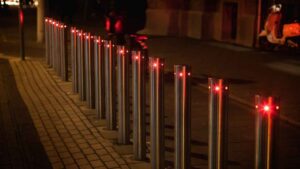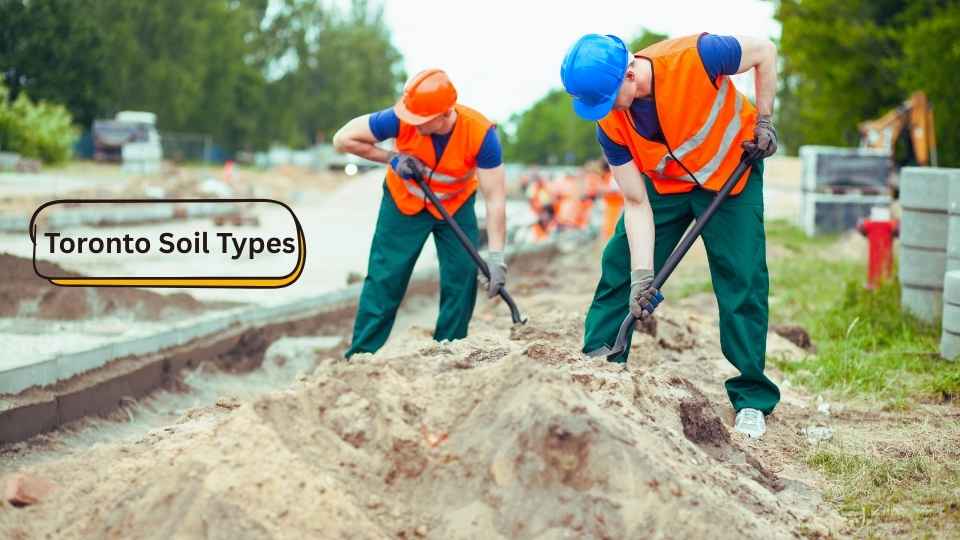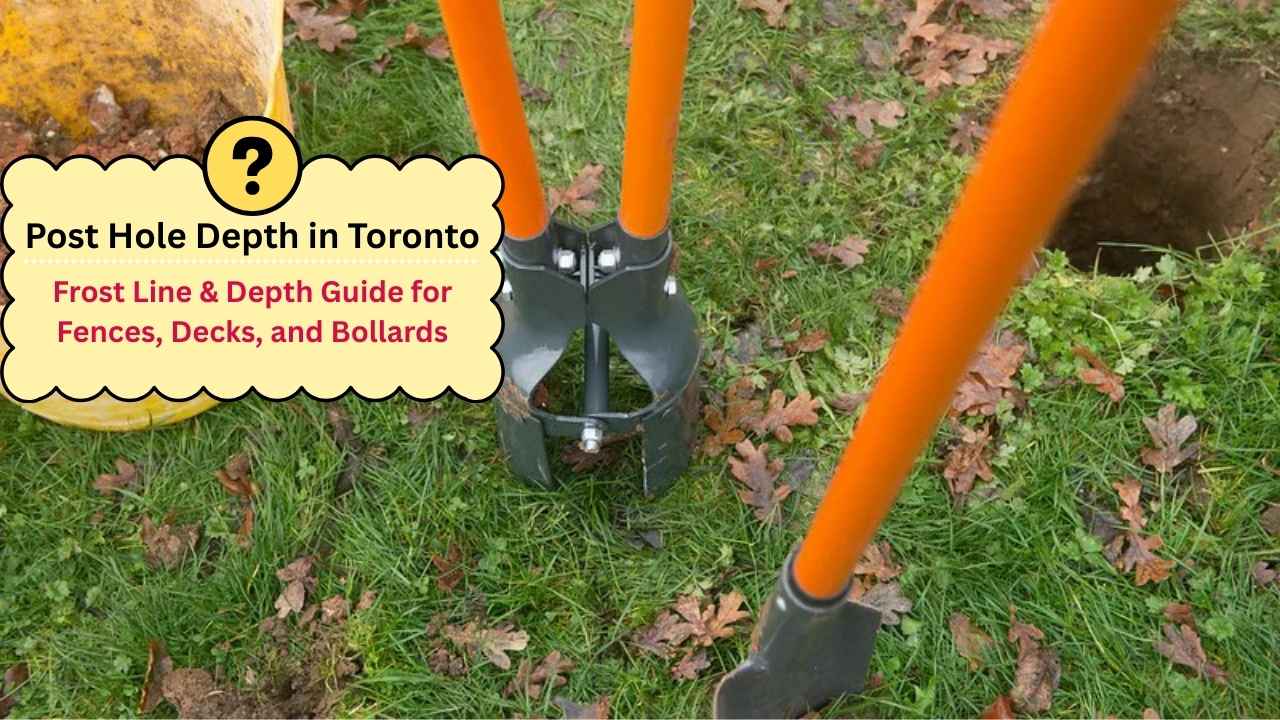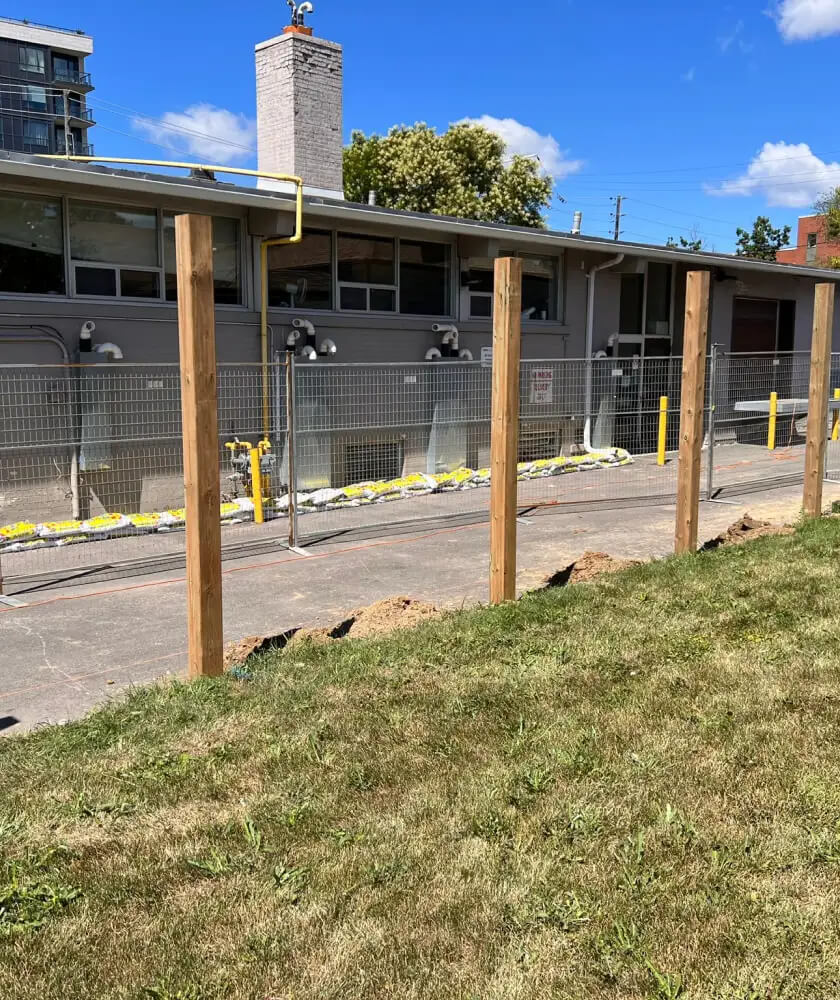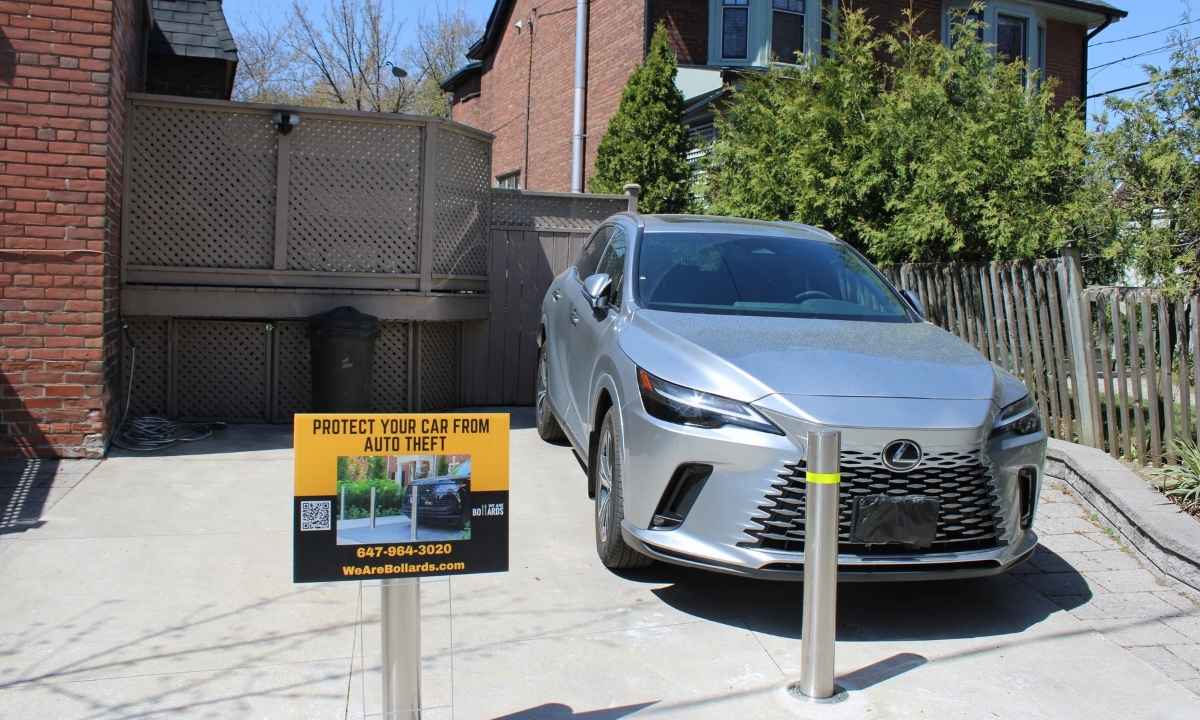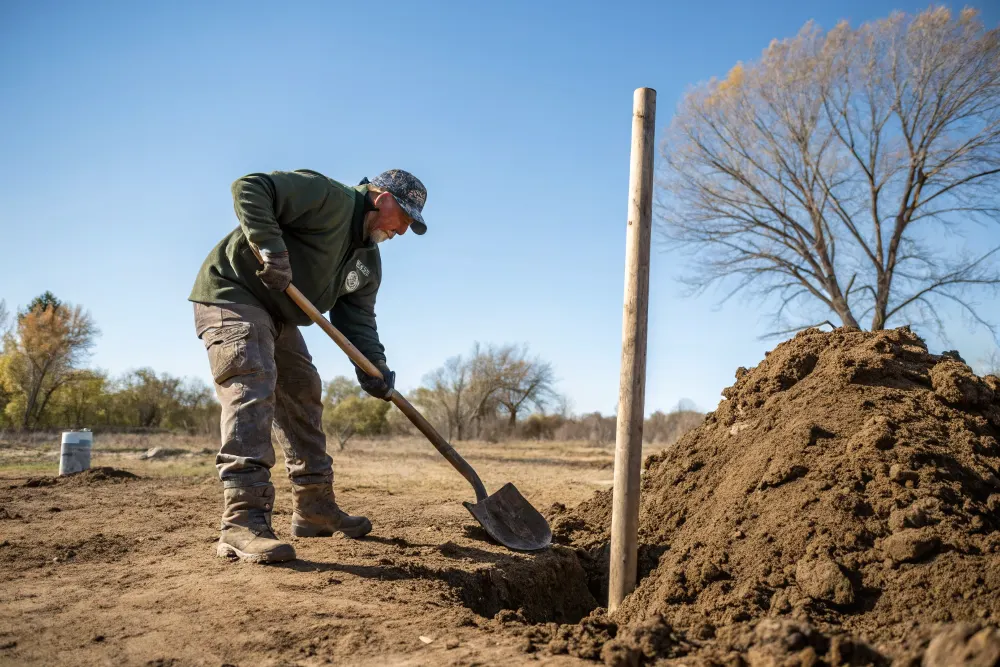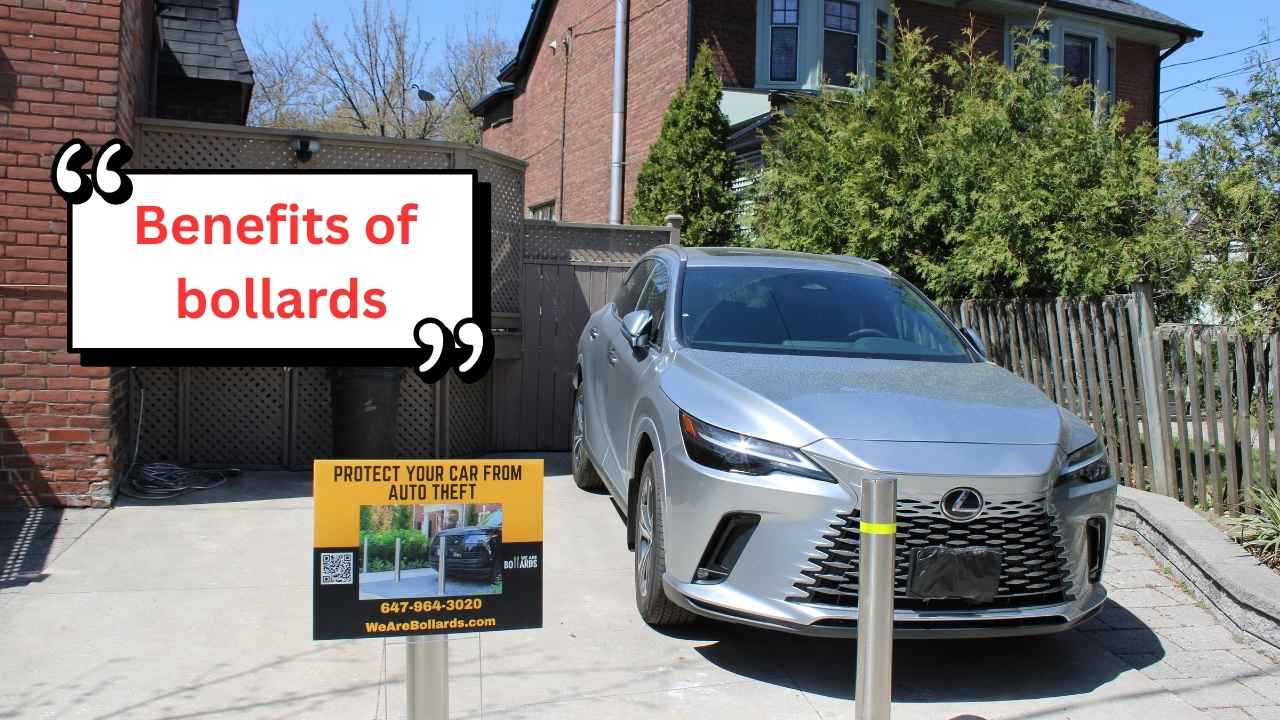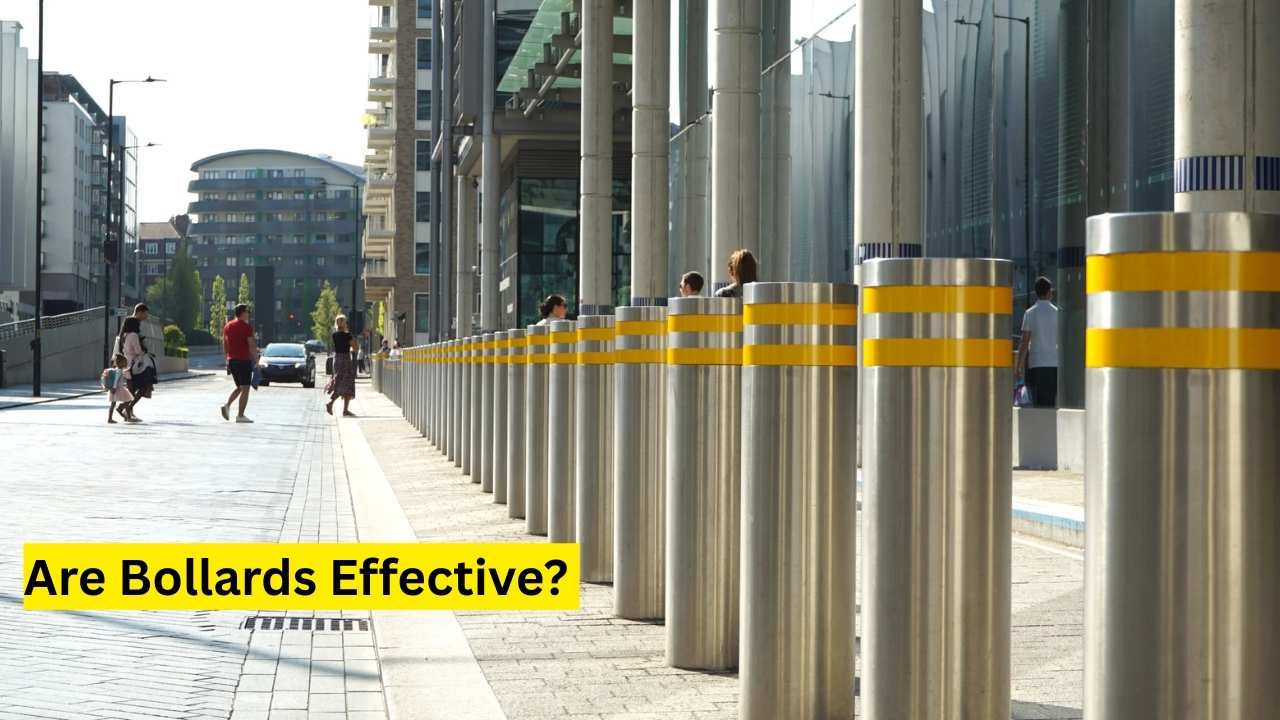Proper bollards install is key to controlling traffic, safeguarding pedestrians, and protecting property. Knowing how to install bollards correctly ensures they are durable, secure, and effective.
Start by planning the layout and spacing according to your specific needs. Mark the exact spots where each bollard will go. Using a post-hole digger, create holes deep enough to provide stability. Once the holes are ready, position the bollards carefully and pour concrete around the base, making sure each bollard is level and aligned properly.
Allow the concrete to fully set before putting the bollards into use. Following these steps for bollards install provides a strong, reliable solution for safety, security, and traffic management, making it an essential task for property managers, urban planners, and business owners.
Introduction To Bollards
Bollards are sturdy, and vertical posts have been installed to control traffic and protect spaces. They can be made from various materials like steel, concrete, or plastic. Bollards are crucial for maintaining safety and security in many environments.
Purpose And Importance
The primary purpose of bollards is to enhance safety and security. They serve as physical barriers to prevent vehicle access. Bollards protect pedestrians, buildings, and infrastructure from accidental or intentional vehicle impacts. They also help in organizing traffic flow and ensuring restricted areas remain inaccessible to unauthorized vehicles.
Installing bollards can significantly reduce the risk of accidents. They offer a clear visual cue to drivers, helping to delineate pedestrian zones and vehicle pathways. In high-risk areas, bollards can be equipped with additional features like lighting or reflective materials to improve visibility.
Common Applications
Bollards are used in various settings to enhance safety and security. Below are some common applications:
- Pedestrian Walkways: Bollards separate pedestrian areas from vehicular traffic.
- Building Perimeters: Bollards protect buildings from accidental vehicle collisions.
- Parking Lots: They help organize parking spaces and direct traffic flow.
- Storefronts: Bollards prevent vehicles from crashing into storefronts.
- Public Spaces: They are used in parks and plazas to protect pedestrians.
Below is a table summarizing the common applications of bollards:
| Application | Purpose |
| Pedestrian Walkways | Separate pedestrian areas from vehicular traffic |
| Building Perimeters | Protect buildings from vehicle collisions |
| Parking Lots | Organize parking spaces and direct traffic flow |
| Storefronts | Prevent vehicles from crashing into storefronts |
| Public Spaces | Protect pedestrians in parks and plazas |
Types Of Bollards
Understanding the types of bollards is essential for choosing the right one for your needs. Each type serves a unique purpose and offers different benefits. Below, we dive into the three main types of bollards: fixed, removable, and automatic.
Fixed Bollards
Fixed bollards are permanently installed and provide strong protection. They are ideal for areas requiring constant security. These bollards are often found in front of buildings, along sidewalks, and around pedestrian zones.
- Made from strong materials like steel or concrete.
- Installed by embedding into the ground.
- Offers high resistance to impacts.
Removable Bollards
Removable bollards offer flexibility and can be taken out when needed. They are perfect for areas with changing access requirements. These bollards are often used in parking lots and temporary event spaces.
- Easy to install and remove.
- Provide moderate security.
- It can be locked in place when needed.
Automatic Bollards
Automatic bollards are motorized and can be raised or lowered automatically. These bollards are great for high-security areas that need controlled access. They are commonly used at government buildings and private premises.
- Controlled by remote or sensor.
- Provide high security and convenience.
- Require professional installation and maintenance.
Planning Your Bollard Installation
Proper planning is crucial before installing bollards. This ensures safety and functionality. The first step involves assessing the site. Then, choose the right bollard for your needs.
Assessing The Site
Begin by evaluating the installation location. Identify potential hazards and traffic patterns. This helps determine the best placement for bollards.
- Measure the area where bollards will be installed.
- Check for underground utilities or obstacles.
- Consider the type of surface (concrete, asphalt, etc.).
- Determine the required spacing between bollards.
Use the measurements to create a detailed site plan. This plan guides the installation process.
Choosing The Right Bollard
Select bollards based on your specific needs. Different bollards serve different purposes. Consider the following factors:
| Type of Bollard | Purpose | Material |
| Fixed Bollard | Permanent traffic control | Steel, concrete |
| Removable Bollard | Temporary access control | Aluminum, plastic |
| Automatic Bollard | Automated access control | Steel, stainless steel |
Consider the aesthetic appeal and security level of each bollard. Choose bollards that match your site’s requirements.
Proper planning ensures a smooth installation process. This enhances safety and usability.
Gathering Necessary Tools And Materials
Before starting the installation of bollards, it is essential to gather all the necessary tools and materials. Proper preparation ensures a smooth and efficient process. Below, we outline the essential tools and materials needed for this task.
Essential Tools
- Measuring Tape: Accurate measurements are crucial for proper placement.
- Level: Ensures the bollards are perfectly vertical.
- Shovel: Useful for digging holes for the bollards.
- Concrete Mixer: Mixes concrete to secure bollards in place.
- Drill: Needed to drill into hard surfaces.
- Screwdriver: For securing bolts and screws.
- Safety Gear: Includes gloves, goggles, and a helmet for safety.
Materials Needed
- Bollards: The primary material, available in various sizes and types.
- Concrete: Essential for securing the bollards firmly.
- Bolts and Screws: Needed to fasten the bollards securely.
- Gravel: Helps with drainage and stability at the base.
- Sealant: Protects the bollards from weather damage.
Having these tools and materials ready will make the installation process straightforward and efficient. Proper preparation ensures the bollards are installed securely and safely.
Preparing The Installation Site
Before installing bollards, proper preparation of the installation site is crucial. This ensures the bollards are secure and function as intended. The following sections guide you through the essential steps for site preparation.
Marking The Locations
Start by identifying the exact spots for each bollard. Use a measuring tape to ensure even spacing. Proper spacing is key for both aesthetics and functionality.
Next, mark the locations with spray paint or chalk. This helps visualize the placement and avoid mistakes. Double-check your measurements to ensure accuracy.
Use a straight edge or laser level for alignment. This ensures all bollards are in a straight line.
Ensuring Underground Safety
Before digging, you must check for underground utilities. Use a utility locator service to mark any underground lines. This step prevents accidental damage to water, gas, or electrical lines.
Contact local utility companies for information. They can provide maps or send a technician to mark the lines.
Create a safety plan based on the utility locations. Ensure all team members are aware of these markings.
Follow local regulations for digging and excavation. These rules ensure safety and compliance with local laws.
Installing Fixed Bollards
Fixed bollards offer security and traffic control. They provide protection and can enhance the appearance of an area. Installing fixed bollards may seem difficult, but with the right steps, it becomes manageable. Follow this guide to install fixed bollards efficiently.
Digging Holes
First, mark the location of each bollard. Use chalk or spray paint to mark the spots. Ensure the marks are evenly spaced and aligned properly.
Next, dig holes for the bollards. The depth of each hole should be at least 18 inches. The diameter should be twice the width of the bollard base. This allows for concrete to be poured around the bollard, securing it firmly.
Use a post-hole digger or an auger to dig the holes. These tools make the job easier and faster. Ensure the holes are straight and uniform in depth.
Setting The Bollards
After digging the holes, place the bollards in their respective holes. Ensure each bollard stands upright and is level. Use a spirit level to check the alignment.
Mix concrete according to the manufacturer’s instructions. Pour the concrete into the hole around the bollard. Fill the hole until the concrete reaches ground level.
Allow the concrete to set. This usually takes 24 to 48 hours. During this time, make sure the bollards remain upright and level.
Once the concrete has been set, you can finish the installation. Add any necessary caps or paint to the bollards. This gives them a polished look and added protection.
By following these steps, you can successfully install fixed bollards. They will provide security and enhance the area’s aesthetics.
Installing Removable Bollards
Installing removable bollards can enhance security and flexibility. These bollards are perfect for areas that need occasional access. This guide will help you install them easily.
Installing Ground Sockets
Ground sockets hold the removable bollards in place. Follow these steps to install them:
- Mark the Location: Choose where you want to place the bollards.
- Dig the Hole: Dig a hole for each socket. Ensure it’s deep and wide enough.
- Insert the Socket: Place the ground socket in the hole.
- Fill with Concrete: Pour concrete around the socket. Let it set.
Securing The Bollards
Once the ground sockets are set, it’s time to secure the bollards:
- Insert the Bollard: Place the bollard into the ground socket.
- Lock the Bollard: Use the provided locking mechanism to secure it.
- Test Stability: Ensure the bollard is stable and secure.
By following these steps, you can successfully install removable bollards. This ensures both security and flexibility for your area.
Finishing Touches
After installing bollards, the final steps ensure they stay secure and look good. These finishing touches are crucial for both safety and aesthetics. Below, we’ll cover the essential steps to secure bollards and clean up the site.
Securing Bollards In Place
Once the bollards are installed, they must be properly secured. This ensures they provide maximum protection and stay in place. Follow these steps:
- Check Alignment: Ensure all bollards are straight and evenly spaced.
- Secure Bolts: Use a wrench to tighten all bolts firmly.
- Apply Sealant: Apply a waterproof sealant around the base to prevent water damage.
- Inspect Stability: Give each bollard a gentle shake to check its stability.
Cleaning Up The Site
Cleaning up after installation is just as important as the installation itself. A clean site ensures safety and a professional appearance. Here’s a step-by-step guide:
- Remove Debris: Collect all construction debris and dispose of it properly.
- Clean Surfaces: Wipe down the bollards and surrounding area with a damp cloth.
- Inspect for Damage: Look for any scratches or dents on the bollards.
- Final Sweep: Sweep the ground to remove any remaining dust or dirt.
By following these steps, your bollards will be secure and the site will be clean. These finishing touches not only improve safety but also enhance the overall look of the installation.
Maintenance And Safety Tips
Proper maintenance and safety of bollards ensure their longevity and effectiveness. By following these tips, you can keep your bollards in top condition and ensure they provide the necessary protection.
Regular Inspections
Conducting regular inspections is crucial for bollard maintenance. Check for signs of wear and tear. Look for any dents, cracks, or rust. These issues can compromise the bollard’s effectiveness.
- Inspect bollards monthly.
- Check for structural damage.
- Ensure the bollard is securely anchored.
- Remove any debris around the base.
Repair And Replacement
Timely repair and replacement are essential for bollard safety, And minor issues should be addressed before they become major problems. Replace damaged bollards to ensure consistent protection.
- Repair minor dents and scratches immediately.
- Replace heavily damaged or rusted bollards.
- Use high-quality materials for repairs.
- Hire professionals for installation and replacement tasks.
| Inspection Frequency | Action Required |
| Monthly | Visual inspection for damage |
| Quarterly | Deep cleaning and removal of debris |
| Annually | Professional inspection and possible repainting |
Frequently Asked Questions
What Tools Are Needed To Install Bollards?
You will need a drill, concrete mix, a level, and safety gear. These tools ensure proper installation and safety.
How Deep Should Bollards Be Installed?
Bollards should be installed at least 18-24 inches deep. This depth ensures stability and security.
Can Bollards Be Installed On Asphalt?
Yes, bollards can be installed on asphalt. Use a core drill to make a hole for the bollard.
How To Ensure Bollards Are Level?
Use a spirit level during installation. Adjust the bollard until it is perfectly vertical for proper alignment.
Conclusion
Installing bollards can enhance the safety and security of your property. Follow the steps carefully to ensure proper installation. Remember to choose the right type of bollard for your needs. Regular maintenance will extend the life of your bollards. With these tips, you can confidently install bollards and protect your space effectively.


